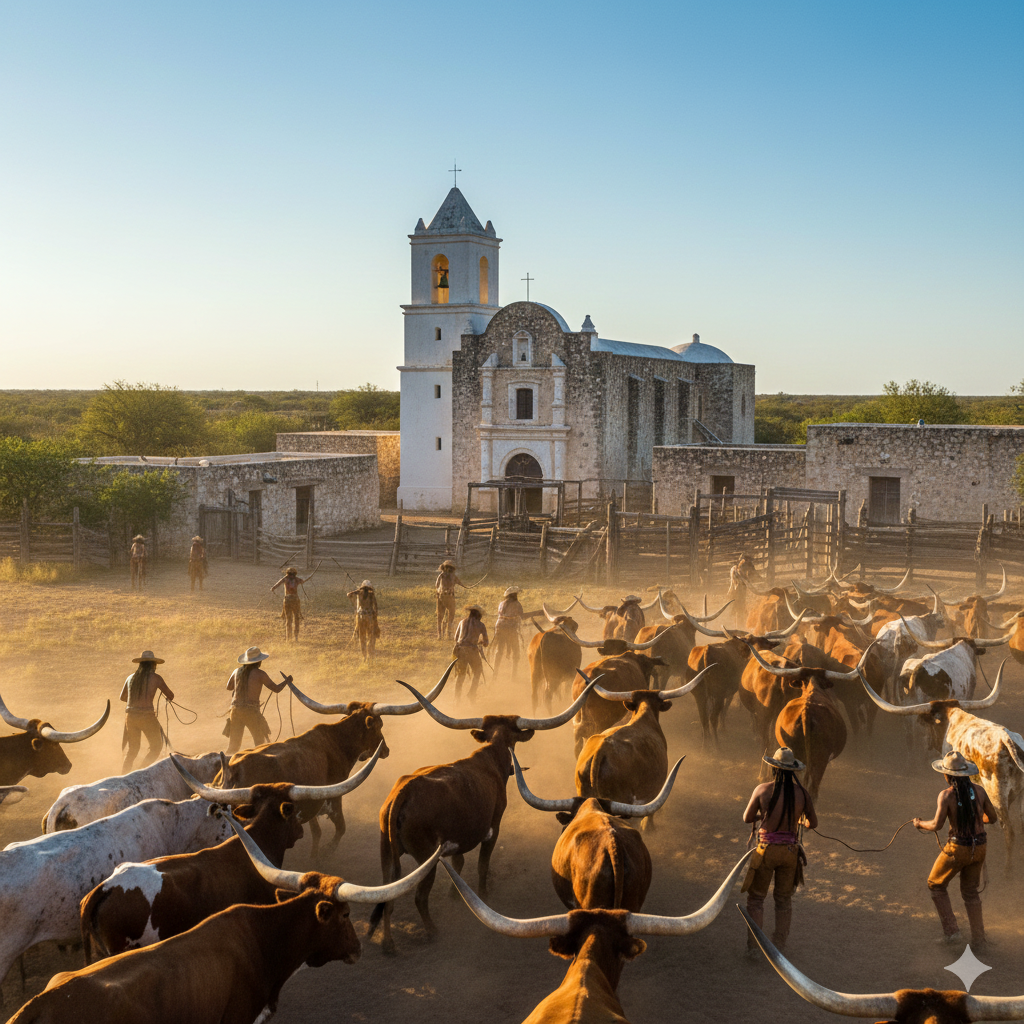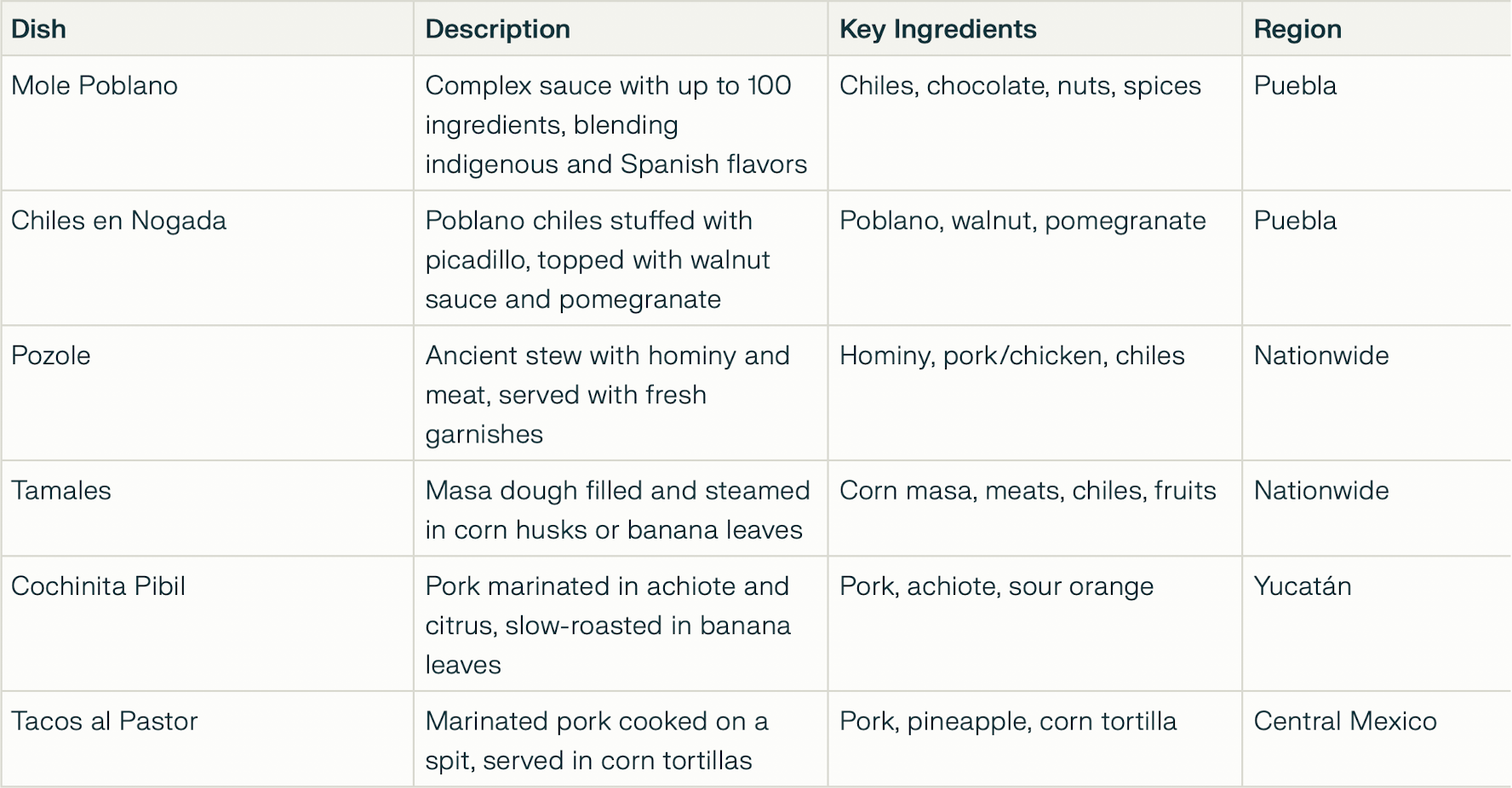What Defines Traditional Mexican Dishes?
Traditional Mexican cuisine represents one of the world's most sophisticated and culturally significant culinary traditions, recognized by UNESCO as an Intangible Cultural Heritage of Humanity. Far more than just food, traditional Mexican dishes embody thousands of years of indigenous wisdom, Spanish colonial influence, and regional adaptation that continues to define Mexican identity today.
The Foundation of Traditional Mexican Cuisine
The Sacred Trinity: Corn, Beans, and Chiles
At the heart of traditional Mexican cuisine lies the sacred trinity of corn (maíz), beans (frijoles), and chiles. These three ingredients, cultivated by ancient civilizations like the Olmecs and Mayans, form the nutritional and cultural foundation of authentic Mexican food.
Corn serves as the primary grain source and is transformed through nixtamalization—an ancient alkaline treatment process that increases nutritional value and creates masa for tortillas and tamales. This technique, dating back thousands of years, makes corn more digestible and enhances its protein content when combined with beans.
Beans provide essential protein and fiber, appearing in countless preparations from refried beans to complex stews. The combination of corn and beans creates a complete protein profile, demonstrating the sophisticated nutritional understanding of pre-Hispanic civilizations.
Chiles add not just heat but complex flavors, with over 200 varieties used in Mexican cooking. From mild poblanos to fiery habaneros, chiles are used fresh, dried, smoked, or powdered to create the distinctive flavor profiles that define regional Mexican cuisines.
Historical Roots and Cultural Fusion
Traditional Mexican cuisine emerged from the sophisticated agricultural and culinary practices of indigenous Mesoamerican civilizations, particularly the Aztecs and Mayans. These cultures developed advanced farming techniques like milpas (rotating crop fields) and chinampas (floating gardens), while perfecting cooking methods that remain essential today.
The Spanish conquest in 1521 introduced transformative ingredients including livestock (pigs, cattle, sheep), dairy products, wheat, rice, and spices like garlic and cinnamon. However, this wasn't simple replacement—it was cultural fusion. Indigenous peoples selectively adapted Spanish ingredients while maintaining their traditional techniques and core ingredients.
This fusion created unique dishes like chiles en nogada, which combines indigenous poblano chiles with European-influenced walnut cream sauce, and mole, which blends pre-Columbian ingredients like chocolate and chiles with Spanish spices. Text continues after popular blog posts section below.
Popular Blog Posts:
Key Characteristics of Traditional Mexican Dishes
Authentic Ingredients and Preparation
Traditional Mexican dishes are defined by several key characteristics that distinguish them from Tex-Mex and other adaptations:
Indigenous Ingredients: Emphasis on native ingredients including varieties of tomatoes, tomatillos, avocados, squash, nopales (cactus pads), and vanilla. These ingredients connect modern cuisine to its pre-Hispanic roots.
Traditional Cooking Methods: Techniques like nixtamalization, molcajete grinding (stone mortar and pestle), and comal cooking (flat griddle) remain essential for authentic flavors. These methods release essential oils and create textures impossible to achieve with modern appliances.
Minimal Processing: Traditional Mexican cuisine emphasizes fresh, whole ingredients with minimal use of processed foods or artificial additives. Salsas are made fresh, tortillas are hand-formed, and spices are ground as needed.
Regional Variation: Authentic Mexican cuisine varies significantly by region, reflecting local ingredients, climate, and cultural influences. Northern Mexico emphasizes grilled meats and flour tortillas, while southern regions feature complex moles and tropical fruits.
Essential Traditional Cooking Techniques
Nixtamalization: The Ancient Corn Process
Nixtamalization is perhaps the most important traditional technique, involving soaking and cooking dried corn kernels in an alkaline solution (usually lime water).
This process:
Removes the corn's outer hull (pericarp)
Increases calcium content and niacin availability
Creates workable masa dough for tortillas and tamales
Improves flavor and aroma
Reduces mycotoxins by up to 97%
Molcajete and Traditional Tools
The molcajete (volcanic stone mortar and pestle) has been used for over 5,000 years to grind spices and create salsas. This tool:
Releases essential oils from spices more effectively than modern appliances
Creates unique textures in salsas and spice pastes
Represents cultural continuity with pre-Hispanic civilizations
Adds subtle mineral flavors from the volcanic rock
Other essential tools include the metate (large grinding stone for corn), comal (flat griddle), and cazuela (clay cooking pot).
Iconic Examples of Traditional Mexican Dishes
Cultural and Nutritional Significance Today
UNESCO Recognition and Cultural Preservation
In 2010, UNESCO designated traditional Mexican cuisine as an Intangible Cultural Heritage of Humanity, recognizing it as "a comprehensive cultural model comprising farming, ritual practices, age-old skills, culinary techniques and ancestral community customs".
This recognition emphasizes that traditional Mexican food is:
A living cultural practice, not just recipes
Connected to sustainable farming and community practices
Essential to Mexican cultural identity and social bonds
A model for preserving indigenous knowledge
Health and Nutrition Benefits
Traditional Mexican dishes offer significant nutritional advantages:
Complete Nutrition: The combination of corn and beans provides complete proteins, while traditional preparation methods increase bioavailability of nutrients.
Natural Ingredients: Emphasis on fresh vegetables, herbs, and minimal processing creates naturally healthy meals.
Medicinal Properties: Many traditional ingredients like chiles, epazote, and cacao have proven health benefits including antioxidants and anti-inflammatory compounds.
Why These Foundations Matter Today
Traditional Mexican cuisine's foundations remain relevant because they represent:
Sustainability: Traditional farming methods like milpas and chinampas are environmentally sustainable and preserve biodiversity.
Cultural Identity: Food serves as a primary way Mexican communities maintain cultural connections across generations and geographic boundaries.
Culinary Innovation: Understanding traditional techniques enables modern chefs to create authentic flavors while adapting to contemporary tastes.
Global Influence: Traditional Mexican cuisine has become one of the world's most popular, influencing global food culture while maintaining its authentic character.
Conclusion
Traditional Mexican dishes are defined by their deep historical roots, sophisticated use of indigenous ingredients, and time-honored preparation techniques. The foundation of corn, beans, and chiles, combined with methods like nixtamalization and molcajete grinding, creates a cuisine that is both nutritionally complete and culturally significant.
These foundations matter today because they preserve ancient wisdom, support sustainable agriculture, and maintain cultural identity in an increasingly globalized world. Understanding what defines traditional Mexican cuisine helps distinguish authentic dishes from adaptations while appreciating the sophisticated culinary knowledge developed over millennia.
Whether you're cooking at home or exploring Mexican restaurants, recognizing these foundational elements ensures you experience the true depth and complexity of one of the world's great culinary traditions—a living heritage that continues to nourish both body and culture.








